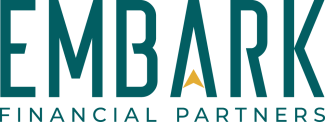
Tips for Funding Roth Accounts in 2023
Why Roth in 2023?
Why could funding Roth accounts in 2023 be thoroughly beneficial in 2023? Because of low current tax rates and 2023 adjustments for inflation in the tax code. The standard deduction, tax brackets, and retirement account contribution limits are all indexed to inflation. Due to the high inflation experienced in 2022, the 2023 standard deduction is higher, 2023 federal income tax brackets have expanded, and retirement account contribution limits (including Roth accounts) have increased. As a result, some individuals and households could be looking at a lower federal income tax bill in 2023. This makes funding Roth accounts more tax efficient so let’s get into how to maximize Roth accounts in 2023.
What are the Best Ways to Fund a Roth Account?
1) Roth IRA contributions. Roth IRA contributions are made on an after-tax basis, but the growth and earnings grow tax-free and qualified distributions from a Roth IRA in retirement are generally tax free. However, a couple issues present themselves with building large Roth IRA balances through contributions. First, the maximum amount you can contribute in 2023 is $6,500. This only increases to $7,500 for those age 50 or over. Secondly, several taxpayers are unable to make Roth IRA contributions due to income restrictions. In 2023, contributions begin to phase out for single filers at $138,000 and for married filing joint filers at $218,000.
2) Roth 401(k)/403(b) contributions are available for taxpayers with access to 401(k) or other qualified retirement plan through their employer. Unlike Roth IRA’s, there are no income restrictions for Roth 401(k)/403(b) contributions so high earners qualify. Additionally, the maximum amount of contribution is dramatically higher at $22,500 and those age 50 or over can contribute up to $30,000.
3) Roth conversions. Simply, Roth conversions are moving funds from a pre-tax retirement account to a Roth account. There is no restriction on the amount you can convert in a tax year. However, a Roth conversion does have tax implications because the amount of the conversion is added as income to you. Consult with your financial planner or tax advisor before implementing a Roth conversion. The goal of a Roth conversion is to maximize tax efficiency over your long-term financial plan.
Benefits of Current Tax Environment
As a result of the taxpayer friendly inflation indexing for the tax brackets limits, it’s allowed for more income in the 10%, 12%, and 22% brackets. The more income in these brackets, the lower a taxpayer’s federal tax bill. The more income in these brackets also makes Roth contributions more tax effective because it allows for years of tax-free compounding growth
The inflation indexing of the Roth income limits also opens the door for more individuals to be eligible for contributing to Roth IRA’s than previous years.
Downsides to Funding a Roth Account
Clearly, downsides do exist to funding a Roth account compared to a traditional IRA or pre-tax qualified retirement account. Pre-tax contributions are generally more attractive for taxpayers currently in a very high tax bracket. Since Roth contributions are made on an after-tax basis, the most important question to answer is what tax rate am I paying on this contribution now? The lower the tax rate today, the more appealing the Roth contribution becomes compared to the pre-tax contribution.
Final Thoughts
The current Tax Cuts and Jobs Act that has mandated more taxpayer friendly inflation adjustments to brackets, standard deductions, and lower 10% and 12% brackets are set to expire by the end of 2025. Without any new act from Congress, 2026 will not have as accommodative of provisions for funneling money into Roth as the next three years.
As a client, we can help you seize the opportunity of leveraging Roth accounts now and see its impact and value on your asset mix and long-term financial plan.

